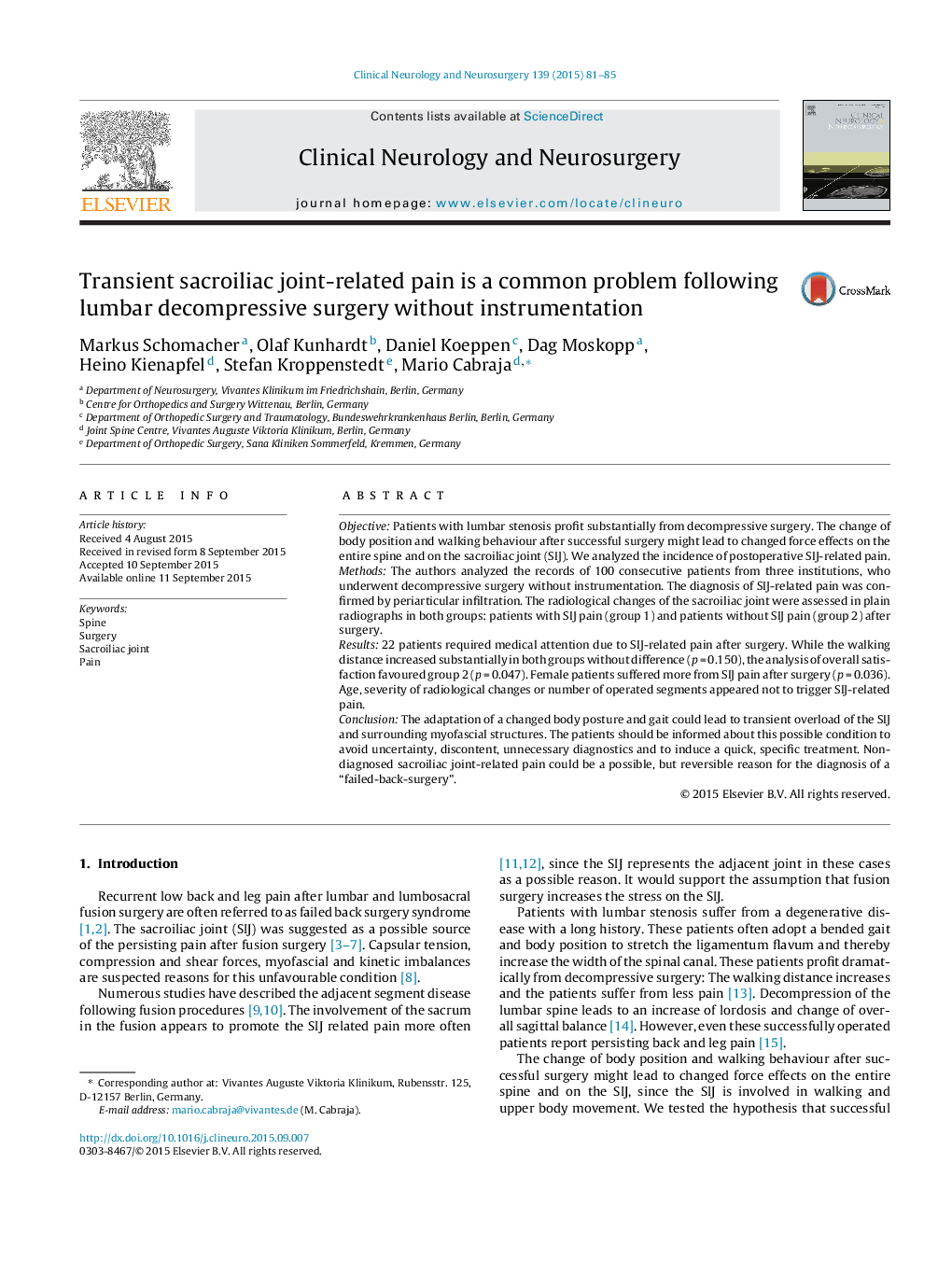| کد مقاله | کد نشریه | سال انتشار | مقاله انگلیسی | نسخه تمام متن |
|---|---|---|---|---|
| 3039770 | 1579683 | 2015 | 5 صفحه PDF | دانلود رایگان |
• We reviewed 100 consecutive patients undergoing spinal decompressive surgery.
• We assessed the incidence of sacroiliac joint-related pain after surgery.
• Sacroiliac joint-related pain is a common problem following successful surgery.
• Change of body posture and gait may trigger pain of the sacroiliac joint and surrounding myofascial structures after surgery.
• The diagnosis could avoid discontent and unnecessary diagnostics.
ObjectivePatients with lumbar stenosis profit substantially from decompressive surgery. The change of body position and walking behaviour after successful surgery might lead to changed force effects on the entire spine and on the sacroiliac joint (SIJ). We analyzed the incidence of postoperative SIJ-related pain.MethodsThe authors analyzed the records of 100 consecutive patients from three institutions, who underwent decompressive surgery without instrumentation. The diagnosis of SIJ-related pain was confirmed by periarticular infiltration. The radiological changes of the sacroiliac joint were assessed in plain radiographs in both groups: patients with SIJ pain (group 1) and patients without SIJ pain (group 2) after surgery.Results22 patients required medical attention due to SIJ-related pain after surgery. While the walking distance increased substantially in both groups without difference (p = 0.150), the analysis of overall satisfaction favoured group 2 (p = 0.047). Female patients suffered more from SIJ pain after surgery (p = 0.036). Age, severity of radiological changes or number of operated segments appeared not to trigger SIJ-related pain.ConclusionThe adaptation of a changed body posture and gait could lead to transient overload of the SIJ and surrounding myofascial structures. The patients should be informed about this possible condition to avoid uncertainty, discontent, unnecessary diagnostics and to induce a quick, specific treatment. Non-diagnosed sacroiliac joint-related pain could be a possible, but reversible reason for the diagnosis of a “failed-back-surgery”.
Journal: Clinical Neurology and Neurosurgery - Volume 139, December 2015, Pages 81–85
